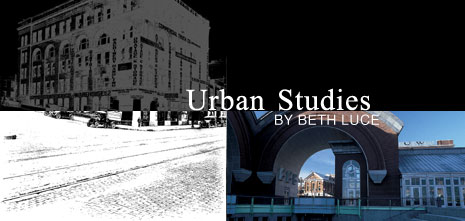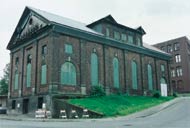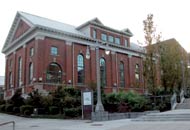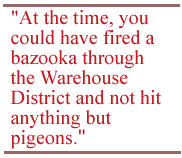
Education Professor Donna Kerr, then UW academic vice provost, had the task of coordinating the UW studies in the Puget Sound region. Her group conducted detailed interviews with 4,000 citizens, 1,000 students and 750 employers. Her staff mined data from the Census Bureau, the National Center for Education Statistics, all of the public and private four-year institutions in the area, community colleges, the vocational-tech institutes and other sources.
When Kerr approached the crucial question of where the campuses should go, she turned to demographers and asked them to identify places that were convenient for people who lacked education opportunities. “Those turned out to be Bothell and Tacoma,” Kerr says.
In summer 1988, Kerr’s group made its recommendation of Tacoma and Bothell as sites for new UW campuses. WSU’s study suggested it develop campuses in Spokane, Tri-Cities and Vancouver. In October, the state higher education board recommended the creation of five new campuses in those cities.
The senior Tacoma legislators and their allies in Olympia, including legislators from Seattle, Tri-Cities, Vancouver, Spokane and the Bothell area, lobbied for the five campuses.
“There was opposition,” says Ebersole, “basically from the legislators from other areas that weren’t getting branch campuses. And some of the community colleges felt that it was going to drain their funding resources. It wasn’t a slam dunk. It made politics a little dicey for a while.” In the end, the Legislature approved the five campuses and appropriated funding.
The UW’s next task was to pinpoint the location of the two campuses. For Tacoma, it came down to two distinct choices: downtown or on the campus of Tacoma Community College (TCC), where there was vacant land for new construction. With so many interested parties, there was plenty of opinion to go around.
The Tacoma coalition was evenly split between the two options, remembers co-chair Erickson. Early on, she favored building from scratch on the TCC campus, with its perceived advantages of sharing a library and other campus resources, lots of open space, and an easier commute for Kitsap County students.

Renovating in the old warehouses was a popular idea, especially with the downtown business community. The historic Union Station, across the street from the district, had recently been saved and was earmarked for restoration, and the Legislature had already appropriated funds for the construction of a new state history museum next door. There was a renovation bug going around, Sullivan says, and Tacomans caught it.
Grimm says he advocated for the Warehouse District because it was easy to buy, was in a central location accessible by car, had the possibility of access by light rail and offered a large plot of available land. “I argued we needed the opportunity to expand the campus to accommodate up to 20,000 students,” he says.
Tacoma Mayor Bill Baarsma remembers when he first heard the idea of renovating warehouses for the campus. “I thought it was a stroke of genius,” he says.
Ebersole says he thought the warehouses would have been privately developed anyway, as was being done in New York’s SoHo District and other formerly blighted neighborhoods. He favored building new brick structures farther up the hill to blend in with the eventual redevelopment.
And then there were people like Bill Philip, who thought the risk of trying to renovate the warehouses would be more costly in the long run than tearing them down and building from scratch.

Philip’s Executive Council had been quietly buying up options on as many parcels of land in the Warehouse District as they could—at their own expense—even before the Legislature approved the campuses. They wanted to appropriate the land before speculation drove up the prices. “I remember one of the members of the Executive Council looking at me and asking what we would do if the campus wasn’t approved,” Philip says. “I said I don’t know, I guess we’ll lose our deposits. It was worth taking the risk.” The Executive Council also promised $1 million to the University if it landed downtown.
Other downtown sites, including the site of the current Tacoma Convention Center, were considered. A siting committee under Kerr’s direction studied the options.
“It was a complex problem,” Kerr explains. The Legislature had ordered the new school to open in less than two years, so a temporary site would be needed close to the permanent site. At the TCC campus, temporary buildings would have to be built, and there was the problem of locating them so as not to be in the way of new construction. Another issue was the probability that the university campus would over-power the community college as it grew. “We were looking at it over time. It was going to turn into a major institution, and you have to have growth space,” she says.
“There were strong points for both TCC and downtown,” Kerr says. “The University’s approach was: ‘Which was better for the state’s investment?’ rather than, ‘Which was better for Tacoma?’”
After a very careful and thorough analysis of the data, Kerr says, downtown was chosen as the more feasible option. The siting committee later recommended renovating the Warehouse District to the HEC board, which approved it.
Getting the institution up and running in such a short time, including hiring faculty, developing curriculum, developing a library and recruiting students, was a monumental feat. But in the fall of 1990, UWT opened its doors in the Perkins Building to 176 upper division and graduate students, most in their 30s and 40s. While the first classes were getting started, the UW created a master plan for 46 acres in the Warehouse District between Pacific Avenue and Tacoma Avenue.

UWT moved into its new, permanent campus in 1997 with the renovation of the power house and four warehouses that, in a previous existence, had housed food, seed and livestock feed. The four buildings were combined into one. Old-timber beams and original brick walls were left exposed in many places, while building materials were reused in stairs and decorative details. The architects seamlessly incorporated the buildings’ original structure with the new design, creating a campus that is at once historic and modern.
Part of the strategy of architect Charles Moore, who won an American Institute of Architects’ award for the master campus plan, was to make the campus an open, pedestrian place, integrated with its urban location. The Pacific Avenue side of campus was turned into retail space, and the University’s first tenants included University Bookstore, Starbucks and Subway. Future development plans incorporate mixed use throughout the campus. Currently, the campus footprint contains a Buddhist Temple and three pubs, including The Swiss, a popular restaurant whose owners lease a historic building from the University that they restored themselves, and The Harmon, a microbrewery and restaurant.
Go To: Page 1 | Page 2 | Page 3